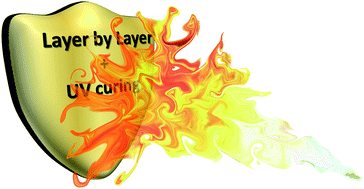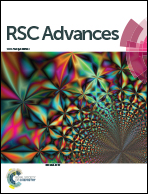Few durable layers suppress cotton combustion due to the joint combination of layer by layer assembly and UV-curing
Abstract
In the last five years, Layer by Layer (LbL) assembly has proven to be one of the most innovative solutions for conferring flame retardancy to fabrics. In spite of this, two main issues for the breakthrough of this approach at an industrial scale are still unsolved: namely, the use of few efficient layers characterized by washing durability. In this context, the present study shows that both these limitations can be overcome by coupling LbL with UV-curing processes in a joint action. In detail, 3 bi-layers (BL) consisting of an anionic UV-curable aliphatic acrylic polyurethane latex doped with a phosphorus-based flame retardant (namely, ammonium polyphosphate, APP) and chitosan have been initially deposited on cotton fabrics by dipping. Subsequently, this assembly has been exposed to UV radiation, thus resulting in a thin coating in which APP is in intimate contact with chitosan within a UV-cured network. This system has proven to be an efficient flame retardant system with exceptional durability features. Indeed, cotton self-extinguishment in horizontal flame spread tests has been achieved, even after washing in water at 65 °C for 1 h. Furthermore, this coating managed to withstand the attack of a 1 M solution of acetic acid or ammonia for 1 h, without losing its original structure. Indeed, no visible signs of coating hydrolysis or slight degradation phenomena have been observed by scanning electron microscopy.


 Please wait while we load your content...
Please wait while we load your content...